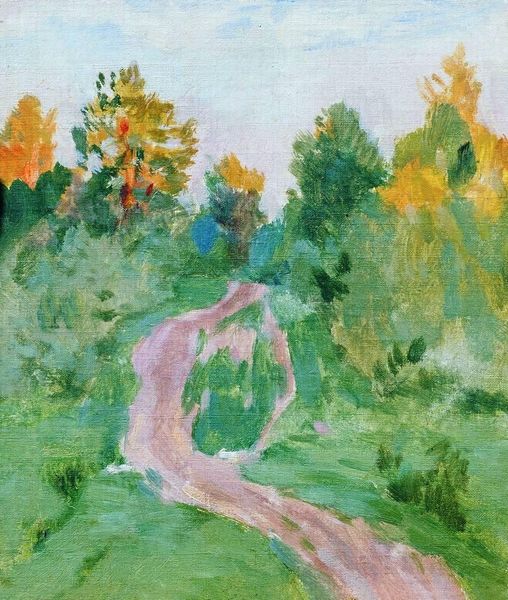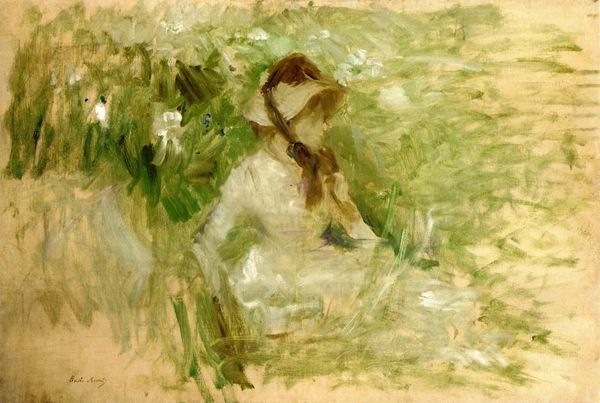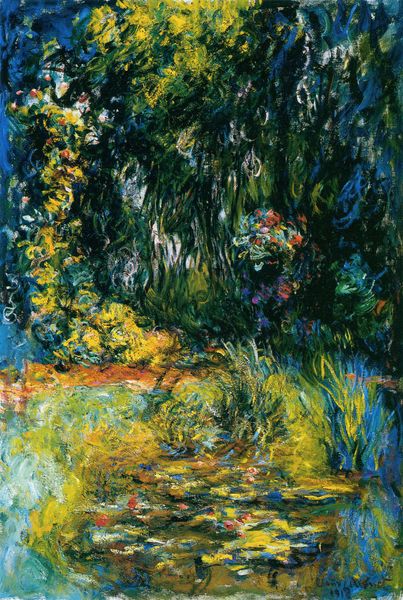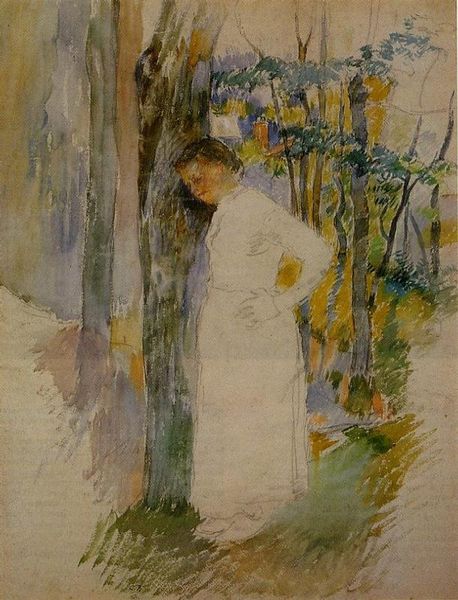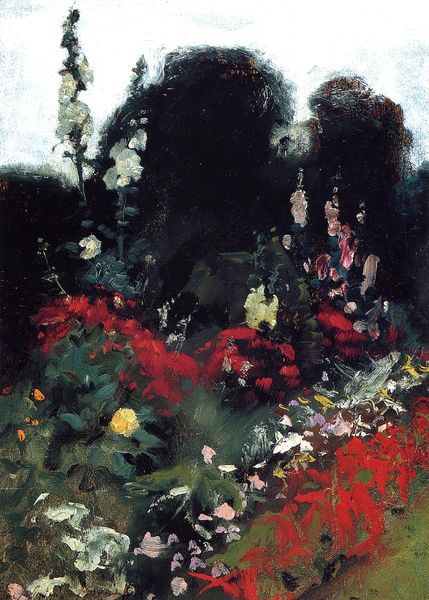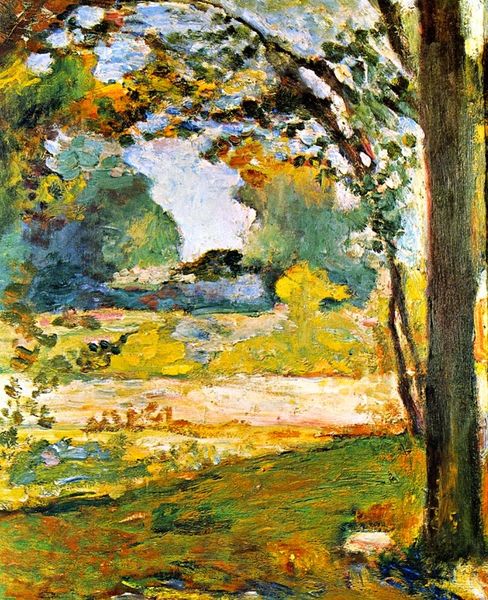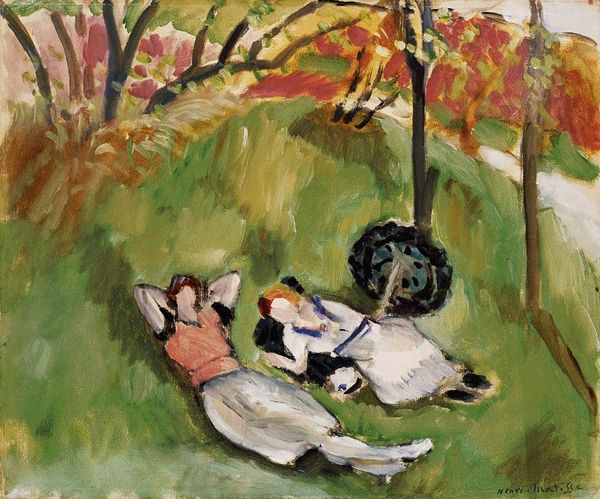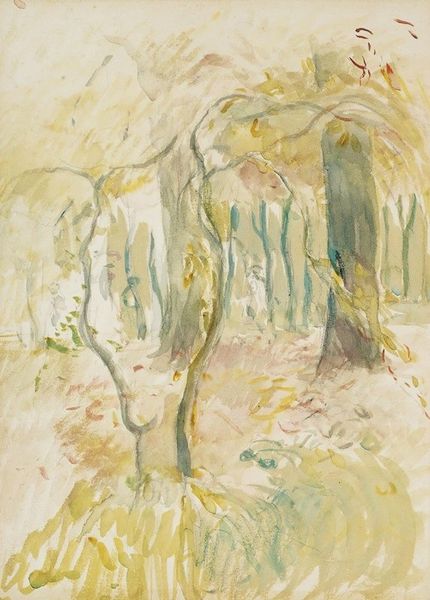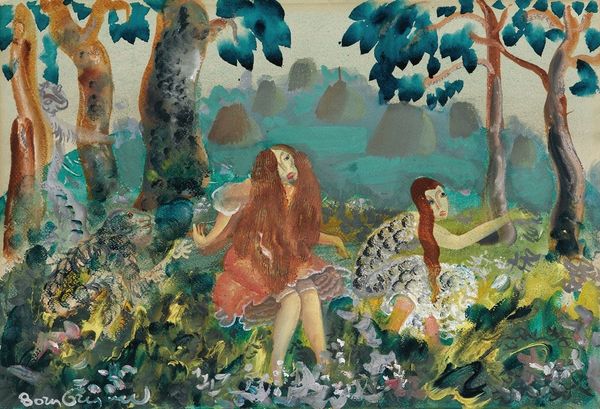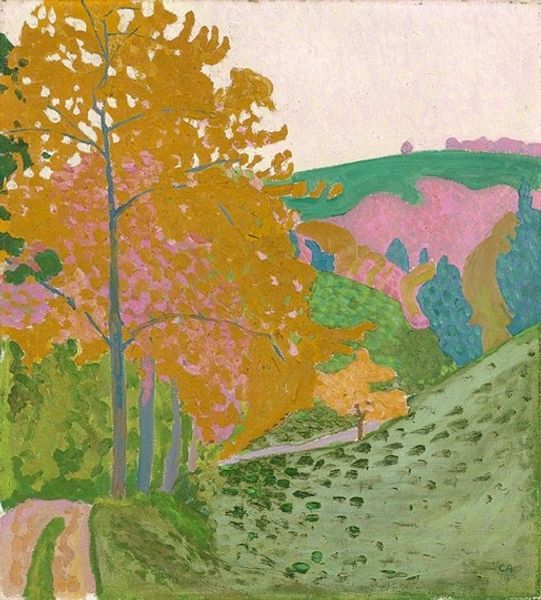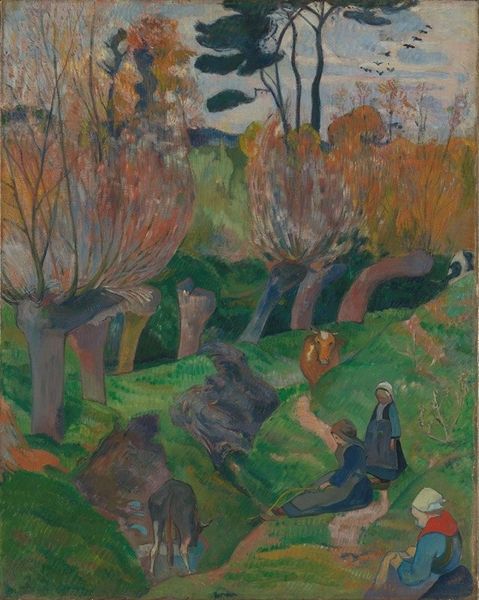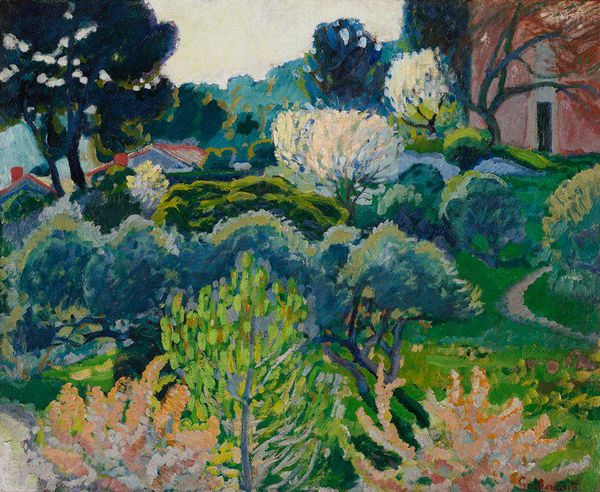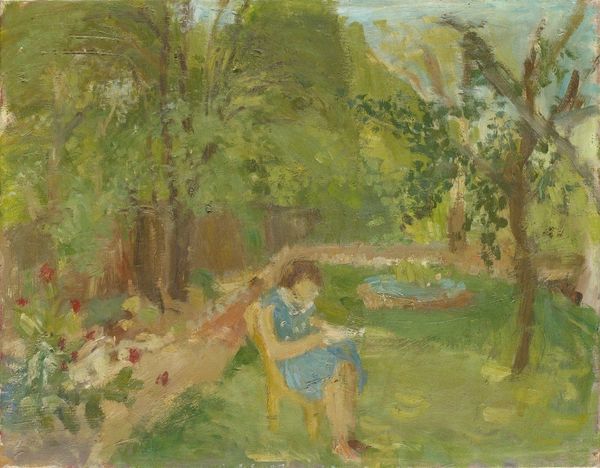
Copyright: Public domain US
Editor: We are looking at Henri Matisse's "Renoir's Garden", painted in 1917 using oil. The vibrant brushstrokes and lush foliage create a surprisingly intimate and serene scene, it almost feels like stumbling upon a hidden grotto. How do you read the symbolism within this piece? Curator: This garden is not simply a representation of nature; it is an encoding of artistic lineage. Notice the white sculpture nestled amongst the riotous colour. It invokes classical statuary, emblems of idealized beauty, set against a Fauvist landscape of almost clashing hues. Do you see the tension? Editor: I do! It's like the past and present are colliding. The statue feels almost ghostly compared to the vibrant flowers. It looks like he is both embracing tradition and simultaneously pushing against it. What’s the significance of using Renoir's Garden as inspiration? Curator: Precisely. The title acknowledges a predecessor. Renoir, an Impressionist master, celebrated light and colour. But Matisse, a Fauvist, amplifies them, pushing beyond mere representation. It’s a dialogue with art history, where symbols are re-imagined, echoing previous meanings whilst forging something startlingly new. Consider the statue, a symbol of perfection almost swallowed by the overwhelming vitality of the natural world. Editor: That makes me think about the Fauvist movement’s interest in expressing subjective emotion rather than objective reality, like a personal vision overtaking established ideals. Curator: Yes. Colour becomes emotion. The statue may also symbolize something about immortality and mortality, permanence contrasted against fleeting moments of colour. Ultimately, this garden exists less as a physical space and more as a stage upon which art grapples with its own evolving identity, and visual symbols constantly undergo transformation across cultures. Editor: It is interesting to see how Matisse acknowledges the past while declaring a bold new direction. Curator: Exactly, the garden becomes a symbolic arena for the evolution of artistic vision.
Comments
No comments
Be the first to comment and join the conversation on the ultimate creative platform.
